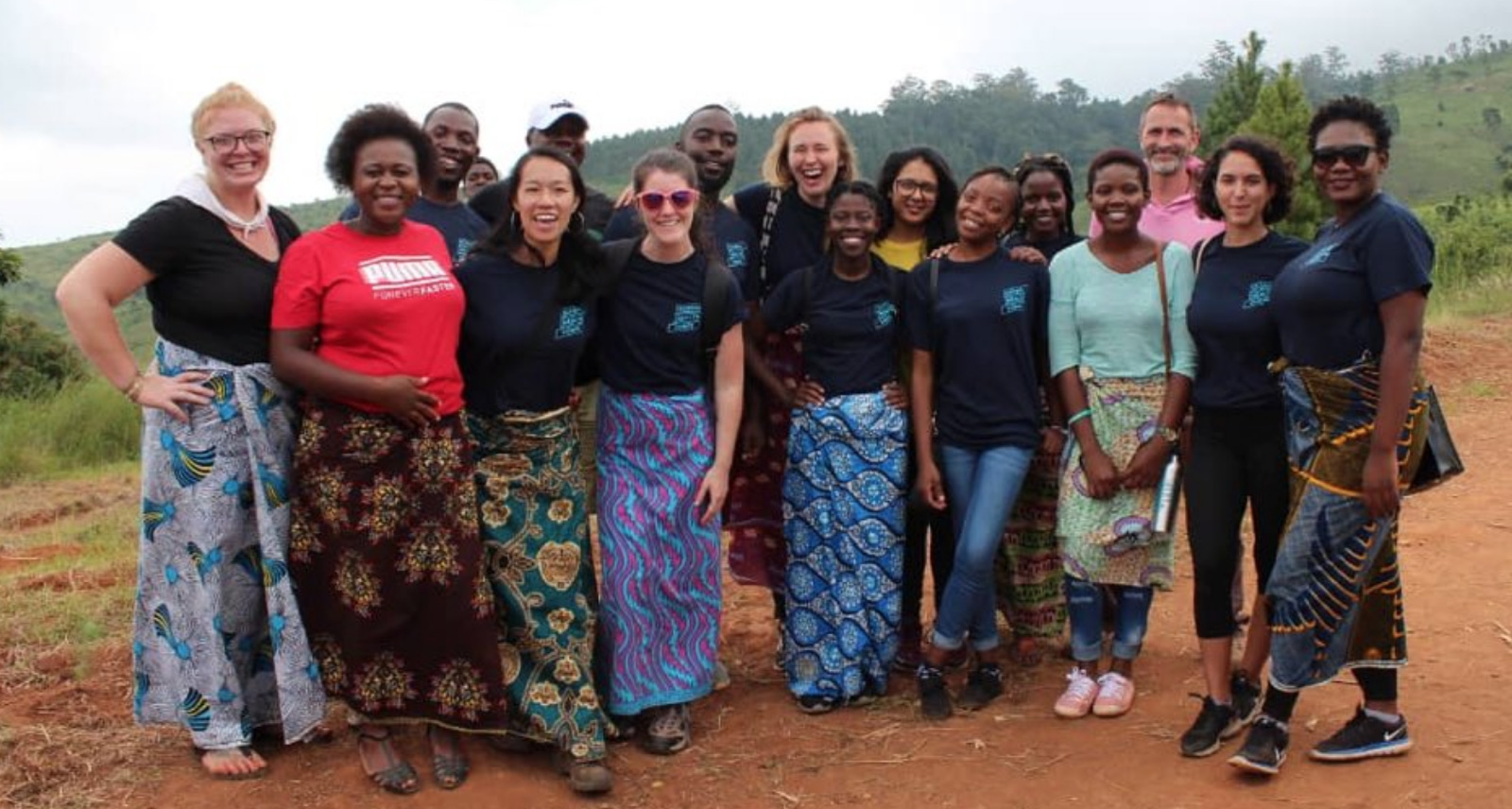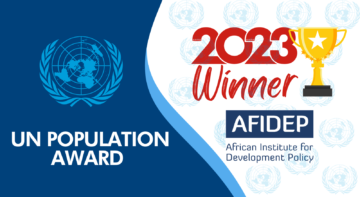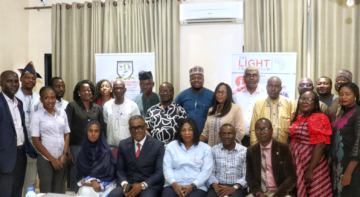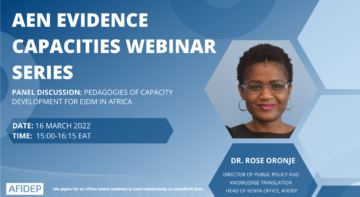Blogs

The CDC reports 3 out of 4 emerging infectious diseases, such as Ebola, HIV/AIDS, and the new COVID-19 originate in animals. Deforestation, evidence shows, is a major driver of increased exposure to animals and these potentially harmful viruses. As such, this pandemic begs for heightened attention to the nexus of human and planetary health and the need for integrated systems and solutions similar to those in which we live.
The following article highlights deforestation and health equity in Malawi as an example of the interactions between ecosystems, public health, economic stability, and community resilience. Although only scratching the surface of our complex systems, this story demonstrates the urgent need for greater attention to the environment and its immediate and long-term effects on global health equity.
In October 2019, a group of the 2018-2019 Global Health Corps (GHC) Malawi cohort hiked the Zomba Plateau—a well-known forest reserve in Malawi’s Southern Region. Expecting to walk under towering trees and lush greenery, the fellows were instead confronted with Zomba’s severe deforestation. While the group hiked up the plateau, flocks of people descended bearing stacks of firewood. The sum of such wood use was painfully clear atop the plateau showcasing 360 views of tree stumps. Such sites are unfortunately not uncommon in Malawi which has the highest rates of deforestation in the Southern African Development Community (SADC) region.
As we commemorate World Environment Day and this year’s theme of biodiversity, we call attention to communities which are most vulnerable to the adverse effects of environmental degradation and climate change. We also celebrate the one-year anniversary of the 2018–2019 GHC Malawi cohort’s reforestation project in Zomba where 3,620 seedlings were planted in the hopes that they will bring long-lasting sources of wealth in the form of energy, sustenance, building material, environmental protection, and health. Just one year later, is this long-term impact in sight? More broadly, what climate action is needed to mitigate Malawi’s deforestation and preserve the natural environment while promoting public health?
MALAWI’S DEVASTATING DEFORESTATION
Between 1972 and 1990, Malawi lost over 40% of forest coverage and lost 15% of its forest and woodland habitat from 1990 to 2005. Today, only 3% of Malawi is forested. Such high rates of deforestation can be attributed, in large part, to unsustainable land management and agricultural practices. Over 85% of Malawians are smallholder subsistence maize farmers, the majority of which cultivate only one or two main cash crops: maize or tobacco. As a result, arable lands are often over-cultivated, overgrazed, and degraded by lack of crop variety (mono-culture). As lands are overused, the yields diminish and farmers are forced to expand to new plots, often requiring cutting down more trees, repeating a vicious cycle.
In line with these trends, shifting agricultural has been the leading driver of tree cover loss in Malawi since 2001. In addition to cutting down trees to meet food needs of Malawi’s growing population, trees are also used as biomass which currently fuels 89% of Malawi’s energy supply.
This immense dependence on land and on trees cannot be overstated. Malawians even have a saying “chimanga ndi umoyo” which means “maize for life.” In effect, a good harvest can feed a family and be sold for profit to support future investments. On the other hand, a bad harvest can lead to household hunger and bankruptcy. At national level, the land and its yields essentially determine national food security and the economy.
DEFORESTATION’S EFFECTS ON HEALTH & WELLBEING
Deforestation is the most visible driver of global environmental change which has been connected to the spread of infectious diseases, like malaria, Ebola, and COVID-19, especially in cases of human populations expanding into previously forested areas.
Deforestation is the most visible driver of global environmental change which has been connected to the spread of infectious diseases, like malaria, Ebola, & COVID-19, especially in cases of human populations expanding into previously… Click To TweetAdditionally, in the absence of tree roots to hold the soil together and keep water underground, water readily passes atop the soil, eroding its top layers, and diminishing reserves of underground water. Domestic or agricultural contaminants are often carried off too, increasing runoff, contaminating clean water, and contributing to water-borne illnesses. For these same reasons, deforestation contributes to flooding as the soil is unable to retain rainfall and instead floods. Ironically, deforestation also leads to droughts because trees are needed to expel water from the ground and rain back into the air as vapour, bringing clouds and regular rainfall. Floods and droughts directly impact public health as they can lead to food insecurity.
Unfortunately, Malawi is no stranger to droughts and floods which comprise an estimated 1.7% loss of Malawi’s gross domestic product annually. The human and financial costs of such disasters are massive in Malawi which does not have resilient infrastructure or safeguards in place. The infamous Cyclone Idai, for example, pillaged through Malawi, Mozambique and Zimbabwe just over a year ago, destroying an estimated 224,000 homes, displacing more than 160,000 people, and causing large-scale food shortages and exacerbated poverty.
Climate change is expected to increase the frequency and intensity of such disasters, in addition to other emerging challenges including air pollution, allergens, wildfires, extreme temperatures, extreme precipitation, widespread disease, greater food and waterborne disease, food insecurity, and mental health disorders—many of which Malawi is already experiencing. Notably, not all climate change is created equal. Increasingly, the greatest impacts of climate change fall on the most vulnerable populations. Such inequity is apparent in the fact that although the continent is one of the smallest contributors to climate change, Africa is projected to be hit hardest by the effects of climate change second only to the poles.
ZOMBA PLATEAU: THE NEED FOR REFORESTATION
The Zomba Plateau, the water source for all of Zomba district, is disproportionately devastated by deforestation. It is estimated that one million trees are deforested in Zomba each year, translating into about 18% forest loss since 2000. Residents in Malakumu on the Zomba Plateau are acutely aware of the effects of deforestation and climate change in their community, citing challenges like; insufficient firewood, frequent forest fires, reduced rainfall, lower river levels, fewer water catchments, and recent inadequate water levels for irrigation farming. Many households, in turn, struggle to harvest enough to provide for their families. Furthermore, women bear the brunt of these challenges as their domestic work involves responsibilities like collecting water for cleaning and preparing meals.
In response, the Malawi GHC Cohort organized a project to bring public attention and community-driven action to mitigate the effects of deforestation in Zomba. Mobilizing about $1,500 in financial resources and partnering directly with Malakumu community and The Reforestation of the Environment and Ecosystem of Zomba (Zomba TREEZ), we planted 3,620 seedlings of various tree species in community woodlots and household gardens. Once mature, the trees will provide food (mango, guava, avocado, lemon, orange and masuku) for consumption and sale, provide lumber for use and sale, improve soil nitrogen levels (Gliricidia), serve as a windbreak to protect crops from storms, strengthen the soil against flooding, promote regular rainfall, and beautify the community.
Planting tree seedlings was a huge first step to address Malakumu’s deforestation. However, to ensure they actually provide for future generations the trees must be nurtured and protected—especially during their first 10 years of maturation. For that reason, women and children had a leading role in the planting as they are integral to sustaining the trees and reaping their benefits. Our cohort also donated $1,000 to protect against forest fires, including building firefighter watch towers and providing rakes and boots to protect the new forests.
GROWTH IN THE PAST YEAR AND FUTURE OUTLOOK
We checked in with Malakumu community members to see how the seedlings are doing and reflect on the value of such reforestation efforts. After speaking with Malakumu’s Chief and three resident beneficiaries, it was clear that the community is grateful for the project and expectant for the benefits the trees will eventually bring:
“Ours are only words of appreciation. We thank GHC for supporting us with tree seedlings. As villagers, we always want to plant trees but we don’t know where we can access tree seedlings. So we are very grateful to GHC.” – Melida Moforo
All of the community members explained how trees are sources of community wealth:
“Trees are wealth because they provide multiple benefits like fuelwood, food, income and other services. For example, the fruit trees we have planted will be a source of income in the future. We have also planted eucalyptus trees which will provide an immediate source of building materials such as poles.” – Adam Yusuf
They also pointed out the environmental benefits of planting trees:
“The project is very helpful because trees are important in different ways. For example, the trees that we have planted will protect us from stormy wind. Even for us to receive good rains and fresh air we depend on trees. And in the future, once the trees have matured we will also get money by selling the trees.” – Isaac Bwanali
And stated how they will continue protecting the seedlings:
“We will take care of the trees by slashing and making firebreaks. Currently, we are all prohibited from leaving our goats moving around in the village. So you can see, we are doing all this in order to sustain the trees.” – Isaac Bwanali
Finally, the Chief explained the importance of engaging the youth in the reforestation activities for sustainability:
“As one way of ensuring sustainability, we encourage active participation of the youth in planting and caring for trees. I know that young people are important in such projects because they are the strongest segment of the community. Moreover, young people are the true heirs of any community development. Deforestation affects all of us but the magnitude of the impacts is worse on the youth. That is why we have to ensure that the youth understand and participate actively in tree planting projects.” – Chief Enock Katembe
Although Malakumu community’s gratitude and commitment to the trees is promising, the real impact of the reforestation efforts will take years to fully realize and must go beyond isolated communities for large-scale impact. Ultimately, much greater investments and climate action are needed to protect sustainable food and water supplies, prevent land degradation, mitigate the effects of drought, prevent flooding, and promote health equity.
Equity in the COVID-19 Response
Compared to many of its neighbours, Malawi has recorded minimal COVID cases–with 393 infections and 4 total deaths. Although promising, we must be cautiously optimistic and continue to support evidence-informed policy responses that protect Malawians from COVID-19 and their livelihoods. There is no question that the impact of COVID-19 will be universal. But just how equitable — or inequitable — its impact will be across different continents, countries, and communities is yet to be determined. Today, we urge the global community to draw attention and support for the most marginalized communities in order to promote health equity in the COVID-19 pandemic and beyond.
_____________________________________________________________________________________
Global Health Corps (GHC) is a leadership development organization building the next generation of health equity leaders around the world. All GHC fellows, partners, and supporters are united in a common belief: health is a human right. There is a role for everyone in the movement for health equity. To learn more, visit our website and connect with us on Twitter/Instagram/Facebook.
The African Institute for Development Policy (AFIDEP) partners with GHC as a placement site for emerging global health equity leaders. Emma Heneine was a 2018-2019 GHC Fellow at AFIDEP and since completing the GHC fellowship has continued to work at AFIDEP as a Research and Policy Associate. Jessica Stephens was a 2018-2019 GHC fellow in Malawi placed at the Elizabeth Glazer Pediatric AIDS Foundation.
This article has also been published on AMPLIFY and on SAIS Perspectives.
Related Posts





